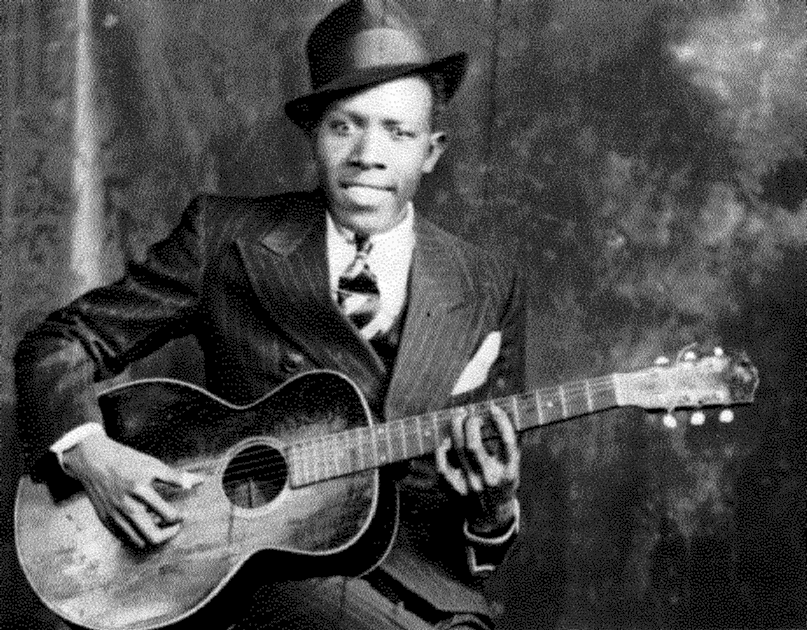Post by username on Jan 25, 2012 22:19:15 GMT -5
Lets start this off with a legend, Good 'ol Leadbelly introduced me into the blues, which I've been taking a liking too.

[glow=blue,2,300]LEADBELLY[/glow]
Huddie William Ledbetter (January 20, 1888 – December 6, 1949) was an iconic American folk and blues musician, notable for his strong vocals, his virtuosity on the twelve-string guitar, and the songbook of folk standards he introduced.
He is best known as Lead Belly. Though many releases list him as "Leadbelly", he himself spelled it "Lead Belly". This is also the usage on his tombstone, as well as of the Lead Belly Foundation. In 1994 the Lead Belly Foundation contacted an authority on the history of popular music, Colin Larkin, editor of the Encyclopedia of Popular Music, to ask if the name "Leadbelly" could be altered to "Lead Belly" in the hope that other authors would follow suit and use the artist's correct appellation.
Although Lead Belly most commonly played the twelve-string, he could also play the piano, mandolin, harmonica, violin, and accordion. In some of his recordings, such as in one of his versions of the folk ballad "John Hardy", he performs on the accordion instead of the guitar. In other recordings he just sings while clapping his hands or stomping his foot.
The topics of Lead Belly's music covered a wide range of subjects, including gospel songs; blues songs about women, liquor and racism; and folk songs about cowboys, prison, work, sailors, cattle herding, and dancing. He also wrote songs concerning the newsmakers of the day, such as Franklin D. Roosevelt, Adolf Hitler, Jean Harlow, the Scottsboro Boys, and Howard Hughes.
In 2008, Lead Belly was inducted into the Louisiana Music Hall of Fame

STELLA
Lead Belly styled himself "King of the 12-string guitar", and despite his use of other instruments like the accordion, the most enduring image of Lead Belly as a performer is wielding his unusually large Stella twelve-string. This guitar had a slightly longer scale length than a standard guitar, slotted tuners, ladder bracing, and a trapeze-style tailpiece to resist bridge lifting.
Lead Belly played with finger picks much of the time, using a thumb pick to provide a walking bass line and occasionally to strum. This technique, combined with low tunings and heavy strings, gives many of his recordings a piano-like sound. Lead Belly's tuning is debated, but appears to be a downtuned variant of standard tuning; more than likely he tuned his guitar strings relative to one another, so that the actual notes shifted as the strings wore. Lead Belly's playing style was popularized by Pete Seeger, who adopted the twelve-string guitar in the 1950s and released an instructional LP and book using Lead Belly as an exemplar of technique.
In some of the recordings where Lead Belly accompanied himself, he would make an unusual type of grunt between his verses, best described as "Haah!" Many of his songs, such as, "Looky Looky Yonder", "Take this Hammer", "Linin' Track" and "Julie Ann Johnson" feature this unusual vocalization. Lead Belly explained that, "Every time the men say 'haah', the hammer falls. The hammer rings, and we swing, and we sing", an apparent reference to prisoners' work songs. The "haah" sound can be heard in the work chants sung by Southern railroad section workers, "gandy dancers", where it was used to coordinate the crews as they laid and maintained the tracks before modern machinery was available.




